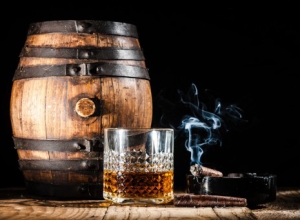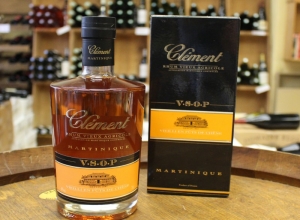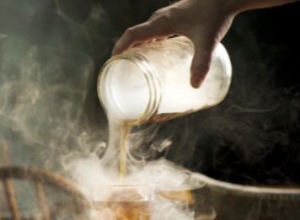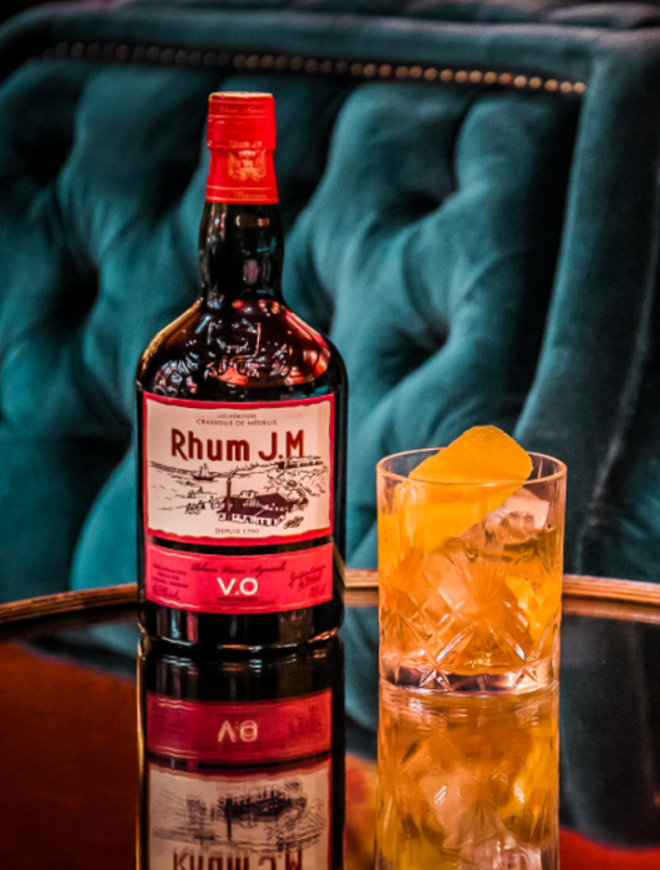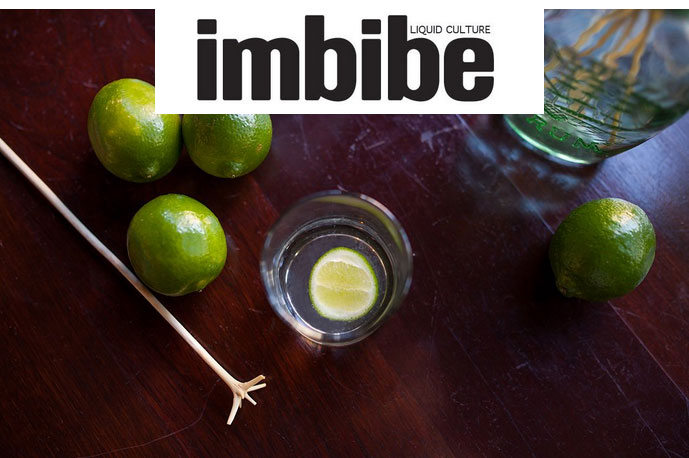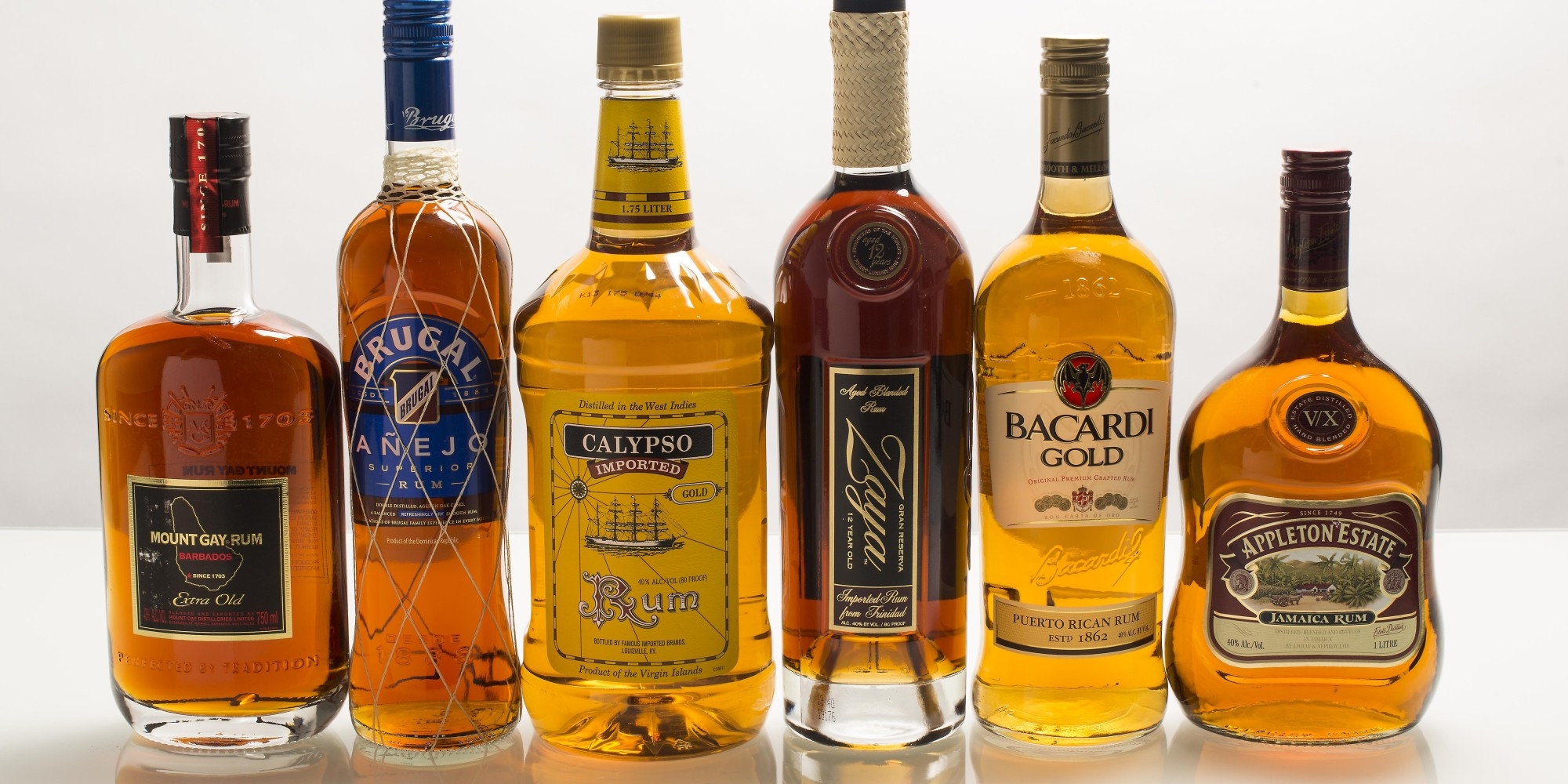Eva Kovacs (aka Asheville Bar Girl) enjoys exploring Asheville’s cocktail scene and learning about its drinks and venues, both old and new. She posts photos and news of her adventures on Instagram, Twitter and Facebook as @avlbargirl. In her new series of online stories with Xpress, she promises to sample hearty whiskeys and tall fruity drinks in equal measure. Her inaugural piece comes just in time for National Rum Day, celebrated in bars and kitchens across the country on Sunday, Aug. 16.
Storm Rhum Bar
I feel like I’m walking into a bar on an old trade ship when I visit Storm Rhum Bar: Inside, it’s dark and cool and full of a sailor’s collection of rum, rhums and souvenirs from exotic places. As the sweltering Asheville summer day falls away, a host of well-curated rums and rhums awaits.
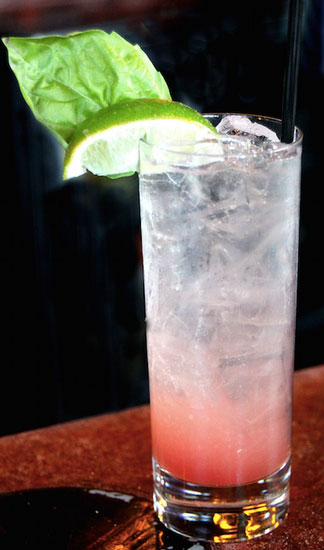
THE OTHER SHRUB: Vinegared juice mixers, called shrubs by cocktail enthusiasts, are made in-house at Storm Rhum Bar. The beverage above features a watermelon-infused shrub. Photo by Eva Kovacs
So what is the difference between rum and rhum, other than the ‘H?’ The primary distinction involves molasses. The French distinguish between rum and rhum, noting that the former is made with the sweet ingredient, while the latter omits it. Although Storm highlights the H-inclusive variety in its name, the bar sells a prodigious selection of both varieties. At least 50 rums are available for tasting in flights or full shots. And Storm bar manager Christopher Keane gives a thoroughly entertaining lecture on the difference between rum and rhum along with his pours, upon request.
To start, Keane brought out Ron Matusalem, originally made in Cuba and later in the Dominican Republic after Castro’s takeover of Cuba in the 1950s. Matusalem has been produced since 1872 and uses the solera method — an aging process that blends younger and older rums to produce a final product that is smoother than a raw, young rum. The drink’s name comes from the Spanish proverb, “Esto es mas viejo que Matusalem,” meaning “It’s older than Matusalem (a biblical figure said to have lived to 969 years),” according to the company’s website. I loved this rum; it was raw, earthy and a stellar performer in the bar’s Old Havana cocktail, a take on the ubiquitous mojito.
Next was Niesson, a rhum agricole (pure cane juice rhum) from the island of Martinique. It was good for a white, unaged rhum and was certainly sailor’s strength at 50 percent alcohol by volume. Unaged rhum, to me, is interesting and raw, but a little harsh. You truly taste the cane and terroir.
To close the tasting, Keane offered a sampling of Rhum JM Gold, an incredibly smooth golden rhum from Martinique. This was definitely my favorite, having benefited from maturation in new American oak casks. This is a true sipping rum. I imagine it would be fabulous in a mixed drink, but to dilute its essence seems sacrilegious.
Storm’s standard cocktail menu boasts an interesting selection, including my all-time favorite, the spicy Devil’s Oasis, and a close second, the Chaicodin (Storm’s version of the classic Painkiller cocktail). Cask-aged ingredients, which infuse drinks like the Negroni with even more complexity, are a rarity at Storm, although they do appear on the menu occasionally. However, the bar does regularly stock a rotating selection of shrubs (vinegared syrup mixers) for use in nonalcoholic sodas and spiked drinks alike, including a delicious Champagne vinegar and watermelon shrub flavored with basil.



